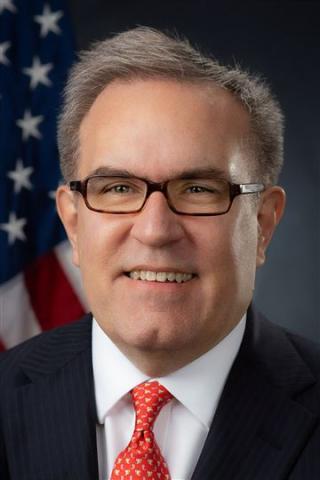Share
EPA Ends Coal Ash Storage Regulations; Ignore Risks For Clean Water

Andrew Wheeler, the EPA's acting director following the resignation of Scott Pruitt, is an efficient anti-environment bureaucrat who is getting right to work helping corporations at the expense of public health and our environment.
The Trump administration announced Wednesday that it is relaxing rules for the disposal of spent coal used to fuel hundreds of power plants nationwide. The coal industry petitioned the Trump administration for the roll back, announced by Environmental Protection Agency Acting Administrator Andrew Wheeler — a former lobbyist for the coal industry.
As one of his first major acts as acting director....Wheeler signed and finalized new standards overseeing coal ash, the leftover waste created by power plants that burn coal.
....the new regulations put more authority back in the hands of industry and states to regulate their own waste.
Basically the new "regulations" aren't regulations at all. It tells the polluters to try to do the right thing. The new rules are a gift to industry.
....environmental groups say the rollback of coal ash storage regulations established by the Obama administration in 2015 could affect drinking water near dozens of sites.
"This administration is granting the wishes of the lobbyists and the lawyers for the coal ash utilities and is turning its back on the families and communities across America that are suffering the consequences of primitive coal ash disposal," said Frank Holleman, a senior attorney at the Southern Environmental Law Center.
"The Trump administration is turing a blind eye to damage done to our drinking water," said Lisa Evans, senior counsel for environmental group Earthjustice. "This is aimed at saving industry money instead of protecting the public."
The prior rules were put in place after significant efforts in 2015 following two industrial coal ash spills. Here's why this is important:
Coal ash is one of the most-generated forms of industrial waste in the country....about 110 million tons are generated each year. About half....is recycled into construction materials such as concrete or wallboard; it makes these materials stronger. However, that leaves about 50 million tons of coal ash that need to be disposed of every year.
Traditionally, power plants mixed the leftover ash with water and sluiced it into unlined pits, where the ash would settle to the bottom. Sometimes, these ponds were dug into the groundwater table -- water that can be pulled up by private drinking wells, or that eventually makes its way into drinking water. Many of these sites also sit along the banks of rivers, lakes and streams, separating waste from waters with nothing more than earthen banks. "Millions of tons of industrial waste directly on the banks of major drinking water reservoirs that serve hundreds of thousands of people," he said, "that's a recipe for disaster."
In the past decade, there have been two major coal ash spills in the US. In 2008, a break in a dam at the Tennessee Valley Authority's Kingston power plant sent over a billion gallons of coal ash cascading into the Clinch River. The black sludge blanketed over 300 acres....Scientists found fish contaminated with high levels of arsenic and selenium months after the spill.
Sources:
https://www.cnn.com/2018/07/18/health/epa-coal-ash-standards-bn/index.html
